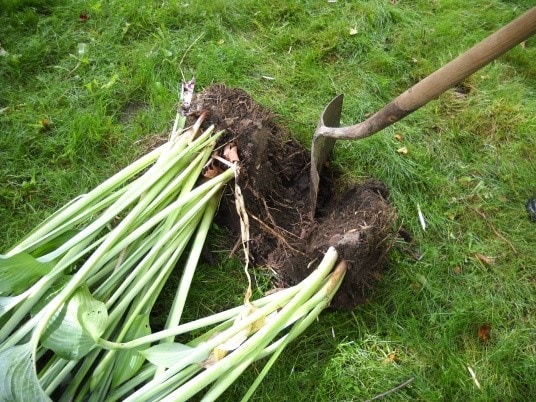When it comes to fall garden chores, there are two main jobs that need to be done concerning your perennials. One is dividing them and the other is cutting them back.
Dividing perennials: There are three reasons you need to divide your perennials. The first reason is to control the overall size of the plant.
Vigorous growing varieties, such as rudbeckia, can quickly outgrow their space. By dividing the clump up into smaller pieces, it will help your garden from becoming too crowded.
The second reason is to rejuvenate older plants. The sure sign that your plants need rejuvenating is that the centre of the clump has no growth and all the growth is just around the edges of the clump.
The third reason for dividing is to propagate from the original clump to create new plants for new garden areas or to give away.
When to divide: The general rule of thumb for dividing perennials is to divide spring and summer flowering perennials in late summer or fall and to divide fall blooming perennials in early spring.
By dividing them at the opposite time of their regular bloom period, the plant is able to put its energy into developing a good root system.
Here’s how to divide them:
- To make digging and dividing easier, water the bed well a few days in advance
- Prune plants back to just about three inches tall.
- Dig out the entire clump as completely as possible and sit it on top of ground or on a tarp.
- Using a sharp spade or knife, gently cut through the roots, dividing the clump into as many pieces as desired. If the centre of the plant has died, divide the living portions into smaller clumps and replant elsewhere. Throw out dead portion.
- Enrich the soil in the new plant areas with compost or triple mix before planting. Treat new plantings with a high-phosphorus fertilizer, such as bone meal.
- Water well.
- Mulching around newly transplanted perennials in fall will help to stop the root ball from being pushed out of the ground by frost throughout the winter.
Cutting back perennials: Cutting back some plants in the fall is a good way to keep flowerbeds looking neat and tidy through winter and helps keep plants vibrant and blooming the following year.
Removing spent foliage and blooms helps a plant focus on recharging its roots. It also plays a pivotal role in keeping disease and pests at bay as well.
The ideal time to start cutting back your perennials is after the first couple of frosts, when the plants are beginning to turn to fall colour and die down.
The entire plant does not have to be completely brown or faded to begin the process. A pair of secateurs or pruning shears are the best tools to be using to cut the stems.
Cut stems back to about three to five inches above the ground. The advantages of this are that you will know where the plants are come spring and the remaining stems or leaves will provide a bit of insulation for the plant throughout winter.
You do not need to cut all your perennials back in fall. Many can wait until spring. The ones you definitely want to cut back are any that showed signs of insect or disease problems. Do not put those stems into your composter.
Consider keeping some perennial foliage and stems in the garden as shelter for native bee species and butterfly pupae.
Some perennials, including evergreen plants such as epimedium, hellebore, heuchera, dianthus, moss phlox, lavender, bergenia, hens and chicks, and candytuft should not be cut back in the fall.
Tidy them up in spring as needed by removing brown or tattered leaves. I like to leave any perennials that provide an interesting texture there for the winter, such as ornamental grasses, sedums, Russian sage and red hot poker.
Also, leave any perennials that will provide seeds for birds such as purple coneflower, rudbeckia, grasses, and Joe Pye weed.
Happy gardening.
Joanne Young is a Niagara-on-the-Lake garden expert and coach. See her website at joanneyoung.ca









